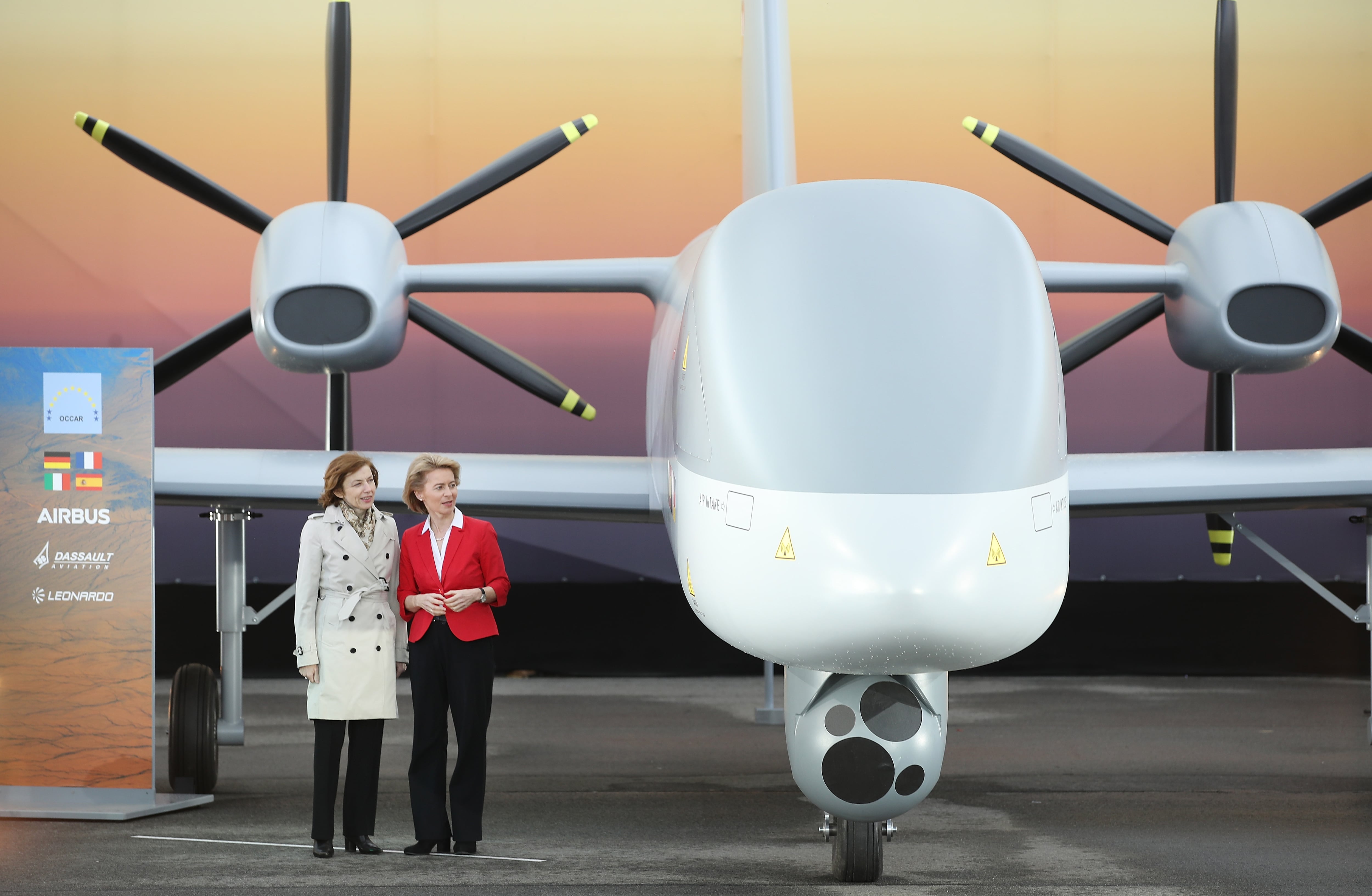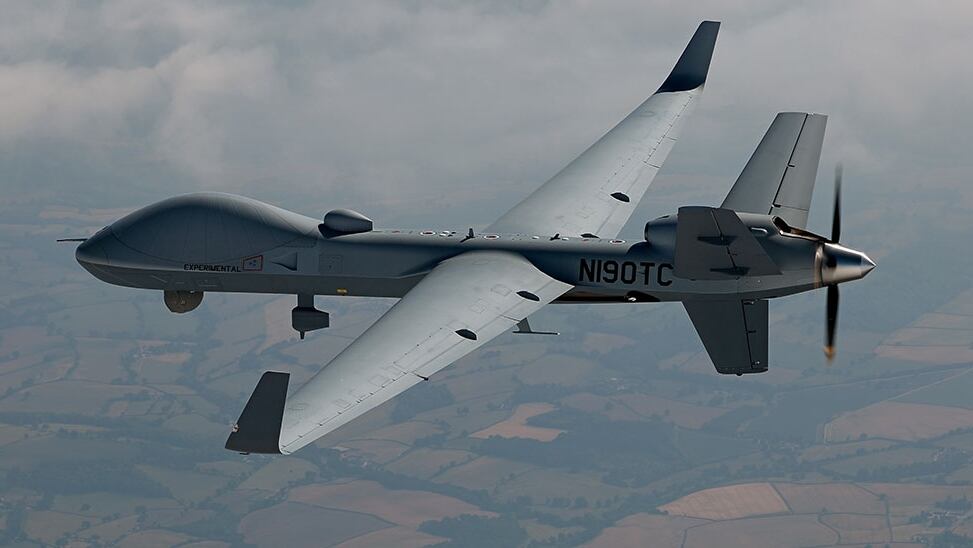PARIS — U.S. drone-maker General Atomics looks to get a foothold in the European market by touting the promise of smooth civilian-airspace integration of its aircraft by militaries there.
The company considers the United Kingdom, with its Protector program of 20 or so planned aircraft, as the launch customer for the MQ-9B SkyGuardian, a successor to the Reaper. The medium-altitude, long-endurance (MALE) drones come with safety features that executives at this year’s Paris Air Show said will enable a so-called military-type certification by the British authorities in the summer of 2023 — the final step toward allowing the drone to fly routinely alongside civilian air traffic.
Belgium also has gained U.S. approval to buy four of the aircraft, complete with a detect-and-avoid suite that can alert the system whenever its flight path risks hitting another aircraft, according to a March 26 announcement by the Pentagon’s Defense Security Cooperation Agency. That technology, along with a host of technologies for safe operations that have long been standard in manned aviation, is still considered something of a holy grail in the drone business.
RELATED

With unmanned aircraft expected to reach deeper into military and civilian life in the coming years, manufacturers on both sides of the Atlantic have been working feverishly to construct their products with requisite safety certifications in mind.
General Atomics' sales pitch is perhaps indicative of an industry where the potential for airspace integration is now taking an equal seat to reconnaissance capabilities and combat punch.
The American company can be expected to tread on manufacturers’ toes in Europe, where vendors are shaping the evolving regulatory landscape of the European Union and member states to ensure compliance with all expected safety requirements.
“We believe we should be there first,” General Atomics President David Alexander told reporters at a briefing during the air show. Being first with a certified drone, he noted, would also open vast potential of the commercial market.
RELATED

But questions remain. Most importantly, issue experts said, it is unclear if the European authorities will honor whatever progress in safety certifications the MQ-9B has made in the eyes of the U.S. Federal Aviation Administration.
Company officials told Defense News they try to keep their fingers at the pulse of the relevant policymaking processes on the continent, putting them at the same tables as suppliers in the European industry, like Airbus, Hensoldt or Leonardo.
The American firm recently worked with the Royal Netherlands Aerospace Center, or NLR, to simulate a SkyGuardian flying in European airspace.
“During the first simulations performed in May, we subjected air traffic controllers to many contingency procedures ranging from engine failure to loss-of-link between the pilot and the remotely piloted aircraft,” Emmanuel Sunil, an NLR project manager, said in a June 18 statement by the research center.
“The results indicate that the new procedures that we are developing will make it possible for MALE RPA to fly safely and efficiently in civil European airspace along with other manned air traffic.”
Sebastian Sprenger is associate editor for Europe at Defense News, reporting on the state of the defense market in the region, and on U.S.-Europe cooperation and multi-national investments in defense and global security. Previously he served as managing editor for Defense News. He is based in Cologne, Germany.








